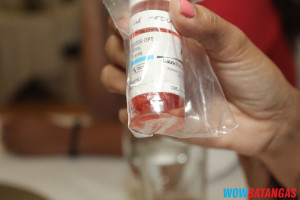Do you still remember the late actors Miko Sotto and AJ Perez? Both were at the height of their showbiz careers when they met an unfortunate incident that took their lives too soon. Another thing that linked the two actors was their being cornea donors.
It was through the Eye Bank Foundation of the Philippines that both Miko and AJ were still able to change the lives of others despite their untimely passing. What seemed to be a grief-stricken event for these actors’ family and loved ones became a life-changing blessing to the recipients of Miko and AJ’s corneas.
What is EYE BANK FOUNDATION OF THE PHILIPPINES?
Eye Bank is a non-stock, non-profit, non-government humanitarian organization founded on March 17, 1994 that owns and operates a medical eye bank named the Sta. Lucia International Eye Bank of Manila (SLIEB). With Ma. Dominga “Minguita” B. Padilla, MD as President and Chair, Eye Bank’s foremost goal is to alleviate blindness among Filipinos. SLIEB is a state-of-the-art eye banking facility which collects, stores, evaluates, and process distribution of corneal tissue for transplant.
Mary Mediatrix Medical Center and Eye Bank’s Partnership
To achieve its greater goals, Eye Bank promotes cornea and eye donation for transplantation by partnering with various hospitals in the country. Last Thursday, September 19th, Eye Bank inked a memorandum of agreement with its latest and first hospital partner in Batangas, Mary Mediatrix Medical Center in Lipa City.
 Present in the MOA signing are Dr. Minguita of the Eye Bank Foundation and the representatives of MMMC led by Dr. Robert M. Magsino (President and Medical Director), Dr. Jaime S. Songco (COO and Senior Vice President for Finance and Business Development), and Dr. JP Polintan (Chief of Mediatrix Ophthalmology Unit).
Present in the MOA signing are Dr. Minguita of the Eye Bank Foundation and the representatives of MMMC led by Dr. Robert M. Magsino (President and Medical Director), Dr. Jaime S. Songco (COO and Senior Vice President for Finance and Business Development), and Dr. JP Polintan (Chief of Mediatrix Ophthalmology Unit).
In his welcoming speech during the event, Dr. Polintan considered the partnership a milestone for MMMC as the institution can now help in alleviating blindness among Filipinos.
The event went further the MOA signing as Dr. Minguita, assisted by the Eye Bank staff members who were with her during the event, held a briefing and consultation regarding the implementation of the said agreement.
All About Cornea, Corneal Transplant, Eye Donation
Cornea is a very thin layer yet major refractive index of the eye. It is the outermost, crystal-like covering or layer of the eye which is responsible for focusing. Because of technology, one cornea can go to more than one person. Before, there is a need to replace the entire cornea. Now, only problematic parts of it can undergo transplant.
 Corneal disease is one of the leading causes of blindness in the Philippines and worldwide. This is mostly due to corneal edema post-cataract surgery, keratoconus, scarring, and bacterial infection.
Corneal disease is one of the leading causes of blindness in the Philippines and worldwide. This is mostly due to corneal edema post-cataract surgery, keratoconus, scarring, and bacterial infection.
From October 1995 to August 2013, Eye Bank already distributed more than 15,000 corneas around the country. Eye Bank Foundation of the Philippines is the only international eye bank in the world which is ISO certified.
In this discussion done by Dr. Padilla, she said that although thousands of corneas have been distributed to patients throughout the years, demand still outweighs the supply that is why Eye Bank enters partnerships with hospitals to help them deal with the situation.
Corneal transplant is a surgical procedure done to replace the damaged cornea of a blind individual by a healthy cornea from a donor. Cornea can only be retrieved after patient is pronounced dead – no heartbeat/respiration and not when they’re brain dead. Corneal tissue removal is done immediately after death of donor, up to 12 hours after death or up to 18 hours is refrigerated.
In corneal transplant, there’s no need for tissue-typing or cross-matching. It’s way easier than any other organ transplant. However, safety testing is required to check for possible communicable diseases.
Almost everyone can be a cornea donor provided that their corneal tissue passes all tests and the donor is free of any communicable diseases. There are also people who want to donate the entire eye than just giving out the cornea. The recipient may or may not know who the donor was.
Most corneal retrieval were done at the morgue. A transplant coordinator from Eye Bank conducts brief counselling with the families when somebody dies. However, Eye Bank does not pay for organ donation. They only provide funeral assistance of P5,000.
 Corneas not suitable for transplant are those from deceased patients with HIV, Hepatitis B, Hepatitis C, rabis, acute leukemia, cancer of the eye, sepsis, and pneumonia.
Corneas not suitable for transplant are those from deceased patients with HIV, Hepatitis B, Hepatitis C, rabis, acute leukemia, cancer of the eye, sepsis, and pneumonia.
Corneal transplant may be performed by duly trained physicians or Eye Bank technicians – registered nurses or med techs accredited by the Eye Bank or Philippine Academy of Ophthalmology.
According to Dr. Padilla, a lot of people who can’t donate organs can still donate corneas. And the reason why there is minimal awareness about eye donation and corneal transplant is because people don’t ask.
So now that Eye Bank have established partnership with MMMC, Batangueños who are open to the possibility of donating corneas in the future will now have better understanding about the process. And those who are in need of a corneal transplant will have easier access to Eye Bank’s assistance.
Kudos to May Mediatrix Medical Center and Eye Bank for this life-changing partnership!
You may contact Eye Bank Foundation of the Philippines, Inc. through their hotline numbers: 0922-805-4542 or 0917-893-5995.
 WOWBatangas.com Your Source of Great News and Stories from the Province of Batangas, Philippines
WOWBatangas.com Your Source of Great News and Stories from the Province of Batangas, Philippines



